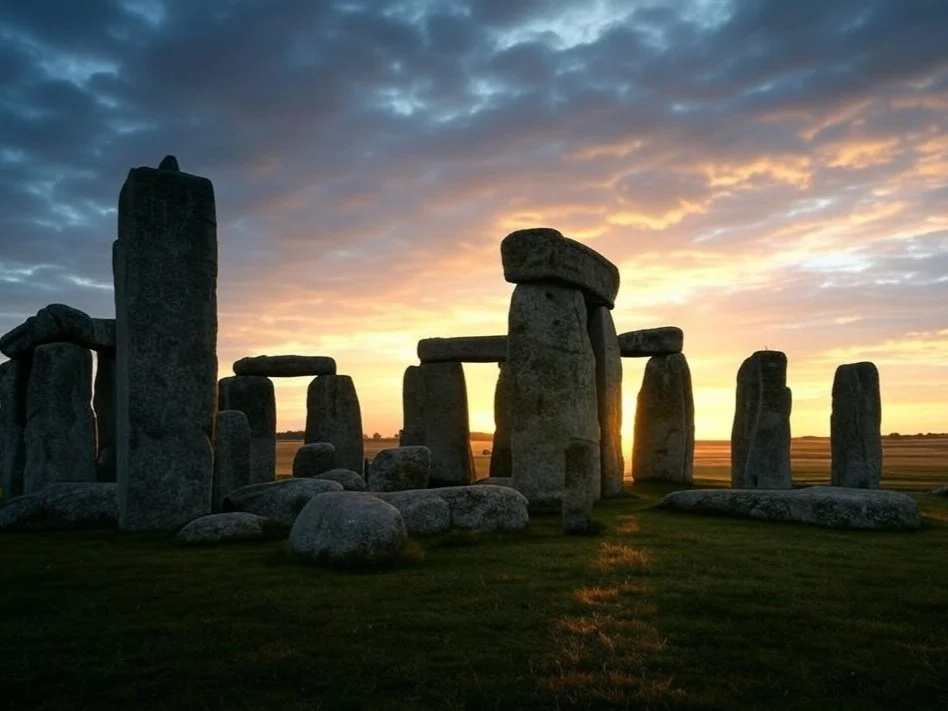Ancient civilizations across the globe demonstrated a profound understanding of astronomy, embedding celestial knowledge into their architecture and monuments. Structures like Stonehenge in England, the Pyramids of Giza in Egypt, and Chichen Itza in Mexico are not only marvels of engineering but also sophisticated astronomical observatories. These monuments align with significant astronomical events, reflecting the importance of celestial cycles in ancient cultures. This knowledge was crucial for agriculture, religion, and governance, illustrating the deep connection between the heavens and human life.
Stonehenge: A Neolithic Observatory
Stonehenge, located on the Salisbury Plain in England, is one of the most iconic prehistoric monuments. Constructed in several phases between 3000 and 2000 BCE, its purpose has been the subject of much speculation. However, its alignment with celestial events suggests a strong astronomical significance.
Astronomical Alignments
Solstices: The primary axis of Stonehenge aligns with the summer solstice sunrise and the winter solstice sunset. During the summer solstice, the sun rises directly over the Heel Stone, casting a beam of light into the center of the monument. This alignment indicates that Stonehenge may have been used to mark the changing seasons, which were crucial for agricultural practices.
Lunar Cycles: Some researchers believe that Stonehenge also tracks lunar cycles. The arrangement of the stones may correspond to the positions of the moon at significant times, such as the major and minor lunar standstills, which occur every 18.6 years.
Cultural Significance
For the Neolithic people who built Stonehenge, understanding the cycles of the sun and moon was essential for planning agricultural activities and religious ceremonies. The monument likely served as a communal gathering place for rituals tied to the solstices and other celestial events, reinforcing social cohesion and spiritual beliefs.
The Pyramids of Giza: Aligning with the Stars
The Pyramids of Giza, constructed around 2580–2560 BCE, are among the most enduring symbols of ancient Egypt. The Great Pyramid of Khufu, in particular, exhibits remarkable astronomical alignments.
Astronomical Alignments
Cardinal Directions: The sides of the Great Pyramid are closely aligned with the four cardinal directions (north, south, east, and west). This precise orientation suggests that the ancient Egyptians had advanced knowledge of astronomy and surveying techniques.
Orion Correlation Theory: Some researchers propose that the layout of the three main pyramids corresponds to the stars in Orion's Belt. This alignment may reflect the Egyptians' belief in the connection between the pharaohs and the gods, particularly Osiris, who was associated with the constellation Orion.
Solar Alignments: The pyramids' design also incorporates solar alignments. For example, the descending passage of the Great Pyramid points to the pole star of the time, Alpha Draconis, which may have held religious significance.
Cultural Significance
Astronomy was deeply intertwined with Egyptian religion and cosmology. The alignment of the pyramids with celestial bodies underscores the Egyptians' belief in the divine nature of the pharaohs and their journey to the afterlife. The precise construction of the pyramids also reflects the central role of astronomy in Egyptian society, influencing everything from architecture to timekeeping.
Chichen Itza: The Mayan Astronomical Marvel
Chichen Itza, a major city of the Maya civilization in present-day Mexico, flourished between 600 and 1200 CE. The site is renowned for its architectural and astronomical sophistication, particularly the El Castillo pyramid.
Astronomical Alignments
Equinoxes: During the spring and autumn equinoxes, the setting sun casts a shadow on the northern staircase of El Castillo, creating the illusion of a serpent descending the pyramid. This phenomenon is believed to represent the feathered serpent god Kukulkan, symbolizing the connection between the heavens and the earth.
Venus Cycle: The Maya were keen observers of Venus, which they associated with warfare and agriculture. The Caracol, an observatory at Chichen Itza, is aligned with the positions of Venus at key points in its cycle. The Maya used this knowledge to time military campaigns and agricultural activities.
Solar Zenith Passage: The Maya also tracked the solar zenith, the day when the sun passes directly overhead. This event, which occurs twice a year in the tropics, was significant for agricultural planning and religious ceremonies.
Cultural Significance
For the Maya, astronomy was a vital aspect of their cosmology and daily life. The precise alignment of their monuments with celestial events reflects their sophisticated understanding of the heavens and its integration into their religious and agricultural practices. The celestial cycles were believed to influence human affairs, and the Maya used their astronomical knowledge to guide decision-making and rituals.
Conclusion
The alignment of ancient monuments like Stonehenge, the Pyramids of Giza, and Chichen Itza with astronomical events highlights the profound connection between ancient cultures and the cosmos. These structures served not only as architectural feats but also as astronomical observatories, reflecting the importance of celestial knowledge in agriculture, religion, and governance. The study of these monuments continues to reveal the ingenuity and wisdom of ancient civilizations, offering a glimpse into their understanding of the universe and their place within it.







